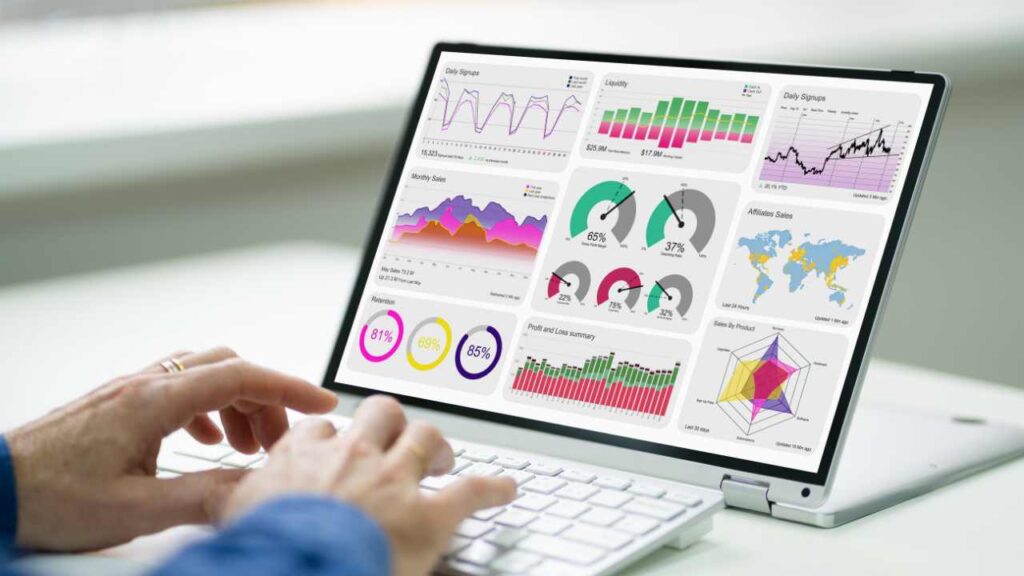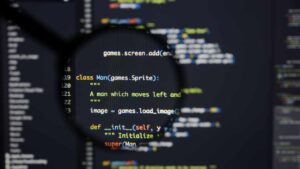
Data is everywhere these days. Companies across all industries are looking to leverage data to gain insights and improve decision making. With the rise of big data and data science, there is a growing need for data professionals who can collect, organize, analyze, and interpret data.
This article will clarify the difference between a data analyst and data analysis. We’ll define what each one is, the key duties involved, and how they work together to help businesses make data-driven choices. Read on to learn how these roles support organizations in the age of analytics.
Definition of Data Analysis
Data analysis is the process of inspecting, cleaning, transforming, and modeling data with the goal of discovering useful information, informing conclusions, and supporting decision-making.
Data analysis involves using analytical and statistical tools to examine datasets in order to draw conclusions about the information they contain. The techniques used can range from basic data summaries in tables and graphs to more complex statistical modeling and machine learning methods.
The overall goal of data analysis is to extract meaningful insights from data. It can be applied in a wide range of domains including business, science, social science, policy, and more to derive patterns, trends, and correlations that can provide valuable information about the problem or phenomenon being studied.
Some key aspects of the data analysis process include:
- Organizing and formatting raw data so it is usable for analysis
- Inspecting, cleaning, and transforming data to improve quality and accuracy
- Applying statistical techniques and models to describe, summarize, and test the data
- Identifying patterns, relationships, trends, and anomalies in the data
- Interpreting results and drawing sound conclusions from the analysis
- Communicating data insights using visualizations, summaries, and other methods
- Automating parts of the analysis process through programming and algorithms
So in summary, data analysis is the detailed evaluation and assessment of data using analytical principles and techniques to understand it better and drive informed decision-making. It converts raw data into meaningful information that can provide key insights.
Data Analysis Process
Data analysis involves several key steps:
- Data Collection: The first step is gathering relevant data from various sources. This may include collecting data from databases, web or mobile analytics, sensors, surveys, social media platforms, etc. The goal is to bring together data from different sources into one centralized location.
- Data Cleaning: Once data is collected, it needs to be cleaned and preprocessed. This involves handling missing values, removing duplicates, fixing inconsistencies, and transforming data into the right format for analysis. Data cleaning helps improve data quality.
- Exploratory Data Analysis: After cleaning the data, analysts conduct an initial investigation using visual methods to understand trends, patterns, and relationships in the data. This involves using techniques like descriptive statistics, visualization, and summary tables.
- Statistical Modeling: Analysts apply various statistical techniques and algorithmic models to analyze and model the data. Regression analysis, predictive modeling, machine learning, data mining, and time series analysis are some commonly used techniques. The models help reveal insights.
- Interpretation: Data analysts interpret the results of the statistical models to arrive at conclusions and identify key takeaways. The findings are summarized and communicated using reports and visualizations.
- Visualization: Data visualization is used throughout the analysis process to help visualize and communicate findings from the data. Effective visuals like charts, graphs, and dashboards help convey insights.
The data analysis process transforms raw data into actionable insights for decision-making and identifying new opportunities. The steps help unravel hidden patterns and trends in the data.
Definition of Data Analyst
A data analyst is a professional who examines large data sets to uncover trends, insights, and patterns that can help organizations make data-driven decisions. The core responsibility of a data analyst is to process raw data and convert it into actionable information through the use of various analytical tools and techniques.
Some key responsibilities of a data analyst include:
- Collecting data from various sources including databases, web applications, sensors, social media platforms, etc. Data can be structured, semi-structured or unstructured.
- Performing initial data exploration and cleaning to remove anomalies, handle missing values, etc. This makes the data suitable for analysis.
- Enriching data by combining it from multiple sources to create comprehensive data sets.
- Analyzing data using statistical techniques and programming languages like R, Python, SQL etc. Common techniques include regression, clustering, classification, time series analysis, forecasting, etc.
- Developing dashboards, reports and visualizations to communicate insights from data analysis in a simplified manner to stakeholders and decision makers.
- Building and optimizing data models for predictive analytics and machine learning algorithms.
- Monitoring data quality and making recommendations for improvements in data collection and management processes.
- Keeping up-to-date with the latest data analytics tools and techniques and implementing them for enhanced analysis.
In summary, a data analyst turns raw data into valuable, actionable insights that can drive data-based strategy and decision making in an organization. Their skills in statistical modeling, analytics, visualization, programming and database technologies make them a crucial asset for data-driven companies.
Skills Needed for a Data Analyst
To be an effective data analyst, you need a mix of technical and soft skills. Here are some of the key skills needed:
Technical Skills
- Strong analytical skills – A data analyst needs to be able to think critically about data, see patterns and trends, and draw meaningful insights from data.
- Data wrangling – This involves gathering, cleansing, transforming and validating data from different sources. Data analysts need to be comfortable working with large, raw datasets.
- Data mining – Using various techniques and tools to explore and analyze large datasets to uncover patterns, correlations and other insights.
- SQL – SQL skills are essential for a data analyst to be able to extract and query data from databases.
- Programming – Python and R are commonly used languages for data analysis and visualization.
- Statistics – Having a good grasp of statistical concepts is important for a data analyst to correctly apply analytical methods and interpret results.
- Data visualization – The ability to create charts, graphs and other visualizations to represent data insights and findings. Tableau, Power BI and R are commonly used tools.
Soft Skills
- Communication – A data analyst needs to be able to clearly communicate data insights to stakeholders who may not have a technical background. Presentation skills are also important.
- Business acumen – Understanding the business side gives useful context and enables asking the right questions of the data.
- Teamwork – Collaboration with other teams such as IT, business analysts and end users is often needed on data analytics projects.
- Creativity – Data analysts need to think creatively about how to approach analytical problems and visualize data in meaningful ways.
- Attention to detail – Careful validation and quality checking of data is an important part of the job.
Read More Articles Like this:
- 10 Real-Life Examples of Using ChatGPT for Excel Tasks
- Master Pivot Table Google Sheets Like a Pro
- Unlock the Power of DAX: Top 10 DAX Functions In Power BI
- Power BI DAX Functions List: Your Essential Guide to Power BI Success
- Power BI DAX Functions List With Examples: A Comprehensive List of Functions
Data Analyst vs Data Scientist
A data analyst and data scientist have some overlapping skills, but their roles are quite distinct. Here’s a comparison of the two positions:
- A data analyst mainly focuses on analyzing and interpreting data to uncover insights, monitor KPIs, and inform business decisions. Data scientists focus more heavily on advanced statistical analysis and machine learning to develop models that solve complex problems or automate decision-making.
- Data analysts tend to work more closely with business teams to understand requirements and priorities. Data scientists operate more independently and work primarily with other data professionals like engineers.
- Data analysts utilize spreadsheets, SQL, and business intelligence tools like Tableau to visualize and present data. Data scientists use R, Python, Hadoop, and machine learning frameworks like TensorFlow.
- While data analysts focus on descriptive and diagnostic analysis, data scientists use predictive analytics and algorithms. Data scientists design and optimize machine learning models that leverage statistical and predictive modeling techniques.
- Data analysts usually have skills and education in business analytics, statistics, SQL, math, or economics. Data scientists typically have academic backgrounds in computer science, applied math and statistics, or engineering disciplines.
- The day-to-day work of a data analyst involves preparing data, querying databases, conducting analysis, and creating reports and dashboards to share insights. A data scientist spends their time on data exploration, model building and validation, and deploying machine learning applications into production.
- Data analysts tend to earn less than data scientists. Entry level data analyst salaries start around $65K while data scientists command over $117K for entry level positions. Senior data scientists can earn over $200K.
So in summary, data analysts focus more on solving business questions using standard data tools while data scientists employ advanced analytics and machine learning methods to create data products. Data scientists have a deeper technical and academic background compared to data analysts who are more aligned with business operations and requirements.
Data Analyst vs Business Analyst
Data analysts and business analysts play important but distinct roles in helping organizations make data-driven decisions. While there is some overlap in their core responsibilities, key differences exist between these two jobs:
- Focus of analysis: Data analysts concentrate on past and current data to uncover insights, identify trends, and make predictions. Business analysts evaluate business processes, needs, and requirements to solve problems and help organizations achieve objectives.
- Scope: Data analysts have a technical, narrow focus on data tasks like collection, cleansing, analysis, visualization, and reporting. Business analysts take a broader view to understand the business, its goals, and how data analytics can inform strategic decisions.
- Tools and skills: Data analysts spend more time working with statistical, programming, and visualization tools to mine, interpret, and present data. Business analysts emphasize skills like requirements gathering, process modeling, stakeholder management, and translating analysis into plans.
- Analytics vs analysis: Data analysts conduct analytics by crunching numbers and uncovering insights from data sets. Business analysts perform analysis by documenting business needs, assessing processes, and determining solutions.
- Deliverables: Data analysts deliver reports, dashboards, models, algorithms, and other data products. Business analysts produce requirements documents, process maps, gap analyses, and recommendations to achieve business goals.
While data analysts and business analysts have distinct priorities, they work closely together. Business analysts identify issues and requirements that shape the data analyst’s approach. Data analysts inform the business analyst’s understanding of challenges with analytical insights. This collaboration enables data-driven action to improve business performance.
Day in the Life of a Data Analyst
A day in the life of a data analyst can vary greatly depending on the industry, company, and specific role. However, some typical activities and responsibilities may include:
- Meet with stakeholders and team members to understand business requirements and objectives for data analysis projects. Discuss what insights they hope to gain or what questions they want answered from the data.
- Retrieve, combine, clean, and organize data from various internal databases, CRM systems, web analytics, etc. Prepare the datasets for analysis.
- Perform exploratory data analysis using statistical techniques and visualization tools to spot trends, patterns, and anomalies in the data. Identify relationships between variables that warrant further investigation.
- Develop predictive models, machine learning algorithms, and other advanced analytics to derive insights from large, complex datasets. Run simulations using models.
- Interpret results of data analysis and present key findings to stakeholders in a clear, understandable way tailored to the audience. Make actionable recommendations based on the insights derived.
- Monitor analytics dashboards and reports to identify changes or trends in key metrics over time. Alert stakeholders of significant changes or anomalies that require intervention or a change in strategy.
- Refine data models and algorithms as new data becomes available. Continuously analyze new data feeds and data sources.
- Document processes, methodologies, findings, and recommendations thoroughly for future reference. Automate repetitive analysis tasks through scripts.
- Keep abreast of latest data analysis tools and techniques and implement them appropriately. Recommend changes or upgrades to analytics infrastructure.
- Work collaboratively with data engineers, IT specialists, business analysts, and others at the company to accomplish larger business objectives.
- Adhere to data governance policies, data security best practices, and legal/regulatory compliance requirements throughout all data analysis activities.
Career Path for a Data Analyst
A career as a data analyst can offer great opportunities for professional growth and development. Here are some common career progressions for data analysts:
Entry Level Data Analyst – This is usually the starting point for someone new to data analytics. Responsibilities include gathering, cleaning and manipulating data, performing basic statistical analyses, and creating reports and visualizations to communicate insights. Skills needed are Excel, SQL, basics of programming languages like Python or R. Education requirements are usually a bachelor’s degree in a quantitative field.
Data Analyst – With 2-5 years of experience, data analysts take on more complex analysis and modeling tasks. They are relied on to provide key business insights and recommendations using techniques like regression analysis and forecasting. Advanced Excel and SQL skills are required, as well as Python or R. Communication skills are also critical at this level. A master’s degree may be preferred.
Senior Data Analyst – At 5+ years of experience, senior analysts have deep expertise using advanced analytics and data mining techniques. They lead projects, guide junior staff, develop best practices, and build new models and algorithms. They present results to key stakeholders and influence important business decisions. Extensive programming and statistical skills are required. A master’s or MBA is often needed.
Lead/Principal Data Analyst – Possesses expert-level analytical and technical abilities, as well as proven leadership skills. Determines analytical initiatives, leads major projects and teams, and sets standards for processes, tools, and methodology. Communicates insights to executives to drive strategy. Typically requires 10+ years of experience, as well as a master’s degree.
Analytics Manager – Oversees a team of data analysts and establishes standards, policies, and best practices for analytics. Responsible for resource and project management, talent development, and fostering a data-driven culture. Typically requires at least 7-10 years of experience. Leadership abilities and communication skills are paramount. An MBA is often preferred at this level.
Conclusion for Data Analysis vs Data Analytics
In summary, data analysis and data analysts, while related, refer to different concepts.
Data analysis is the process of inspecting, cleaning, transforming, and modeling data to discover useful information and support decision making. It involves statistical analysis and programming, and utilizes techniques like data mining, visualization, predictive modeling, and machine learning algorithms. The goal of data analysis is to gain insights and drive informed business decisions.
A data analyst is a professional who carries out the tasks involved in data analysis. Their core responsibilities include collecting, processing and performing analyses on data. Data analysts possess technical skills such as SQL, Python, R, spreadsheet tools, and data visualization. They need to be skilled at statistics, communication, and translating data findings into business insights. Their day-to-day work involves querying data, data mining, data modeling, identifying trends and patterns, interpreting results, and creating reports.
While data analysis refers to the overarching process and techniques, a data analyst is the human agent who executes various data analysis activities. Data analysts utilize their technical abilities to carry out the end-to-end process of data analysis, in order to extract meaning from data and enable data-driven decision making.


